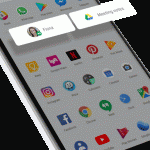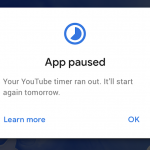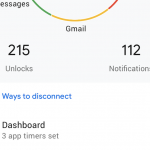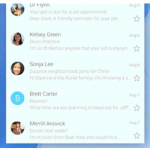Android Pie
 Google launches Android Pie for Pixel phones
Google launches Android Pie for Pixel phones
BY KARISSA BELL From Mashable
The next version of Android is here and, once again, the name is exactly what most of us predicted: Android P is officially Android Pie.
Google announced the official name for the next version of Android, along with the update’s initial release, Monday. The Android 9.0 update will begin rolling out now to Pixel phones, and will be available later this year to other devices.
The update, which has been available in beta since March, comes with a number of improvements, including new personalization features, battery-saving adjustments, and tools that help you track how much time you’re spending on your phone.
But for most users, the most immediately obvious change will be the one that will also take the most getting used to: the new navigation. As I’ve noted before, Android Pie is the first Android update to address the latest trends in smartphone design, such as display notches and edge-to-edge screens. Google has responded to these changes with revamped navigational controls.
The Android Pie update introduces a new gesture-based system. There’s still a home button, as well as a back button (which has a new, minimalist look), but there’s no longer a dedicated button for app-switching. Instead, you now simply swipe up on the screen to see your recently-used apps, just like you would on an iPhone X. There are a number of other gesture-based shortcuts to get used to as well.
Android gets personal
Navigation aside, Android Pie is also the most personalized version of Android yet. Throughout the update, the system will learn from your habits to automatically make adjustments and suggestions.
A new feature, called app actions, for example, will suggest app-specific shortcuts based on your habits. Appearing at the top of your app drawer, app actions are similar to Apple’s Siri suggestions, which also suggest specific shortcuts for the things you do al the time, like look up directions home or pull up your favorite playlist.
Similarly, a feature called “slices” will pull in specific information from your apps and put it in front of you without the need to actually open the app. This feature won’t be available until later this year, but it could include things like showing Lyft prices for a ride home when you type “Lyft” into Google.)
Other AI-driven features are more subtle. New adaptive battery and display features won’t be immediately noticeable, but could make a big difference over time. Adaptive battery learns which apps you use most often and prioritizes only the ones you really need at any particular moment in order to reduce battery consumption. Likewise, adaptive brightness learns your display preferences for different types of light and will automatically make adjustments.
Android Pie’s other biggest change is a new suite of tools Google is calling “digital wellbeing” — features that are meant to help limit how much time you spend with your phone in the first place. This includes an app timer, which lets you set time limits for specific apps. When you’ve reached your limit, the app icon will gray out to discourage you from using it.
There’s also a dashboard feature similar to Apple’s new Screen Time controls in iOS 12, which breaks down exactly how much time you’re spending in each app on a daily basis.
If you need additional help to stop looking at your phone so much, there’s a revamped “do not disturb” mode, as well as something called “wind down,” which will automatically turn your phone’s display to grayscale when you’re getting ready to go to sleep.
These “wellbeing” features won’t be available as part of the initial Android Pie release, but an early version is available now to Pixel owners who sign up for Google’s beta program.
IMAGES:
IMAGE: GOOGLE
Android Pie is official.IMAGE: GOOGLE
For more on this story go to: https://mashable.com/2018/08/06/google-launches-android-pie-update/?utm_cid=hp-r-1#tPmBVIZagmq3









